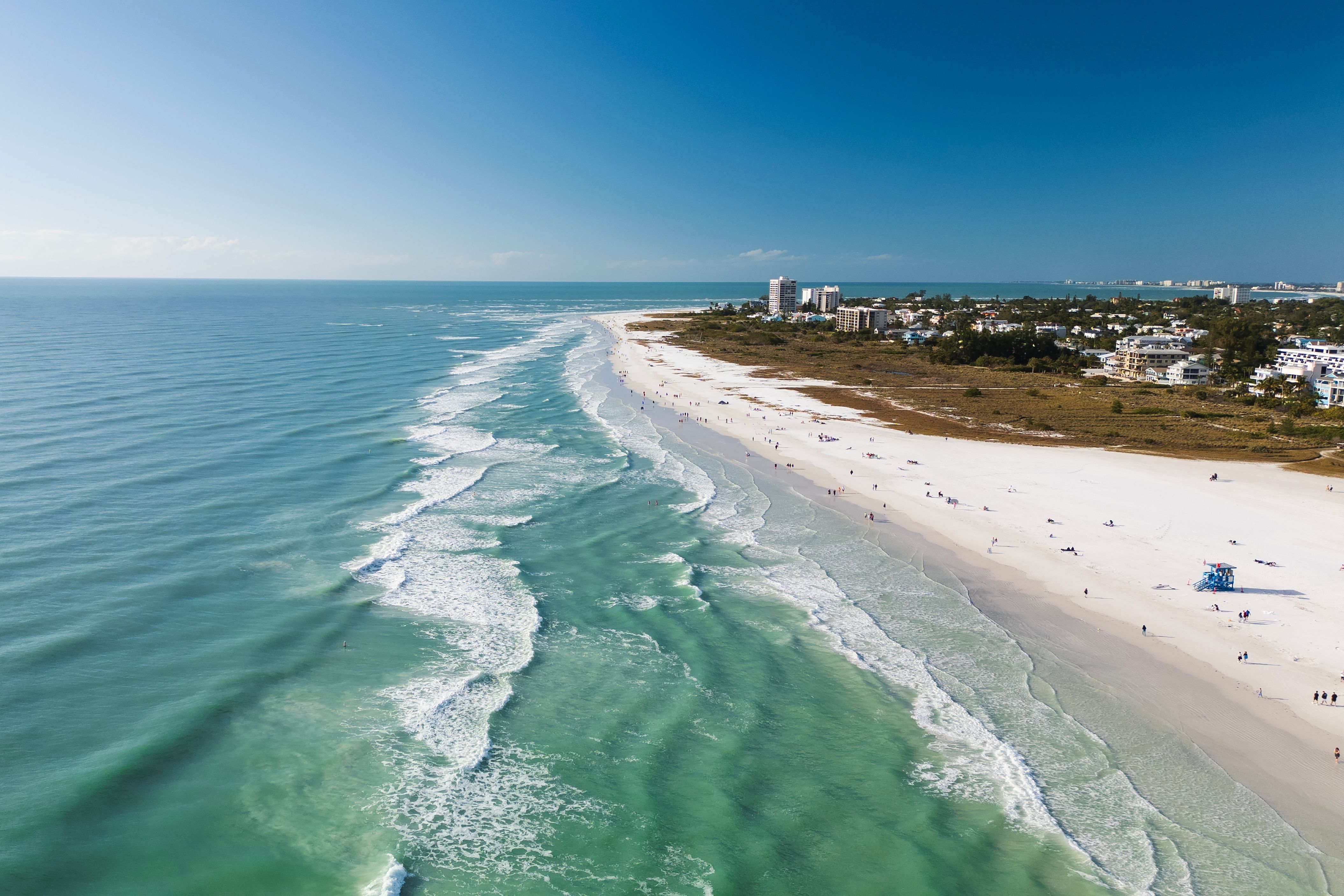Pioneering Bertha Palmer’s Circa 1918 Siesta Key Cottage is Reborn
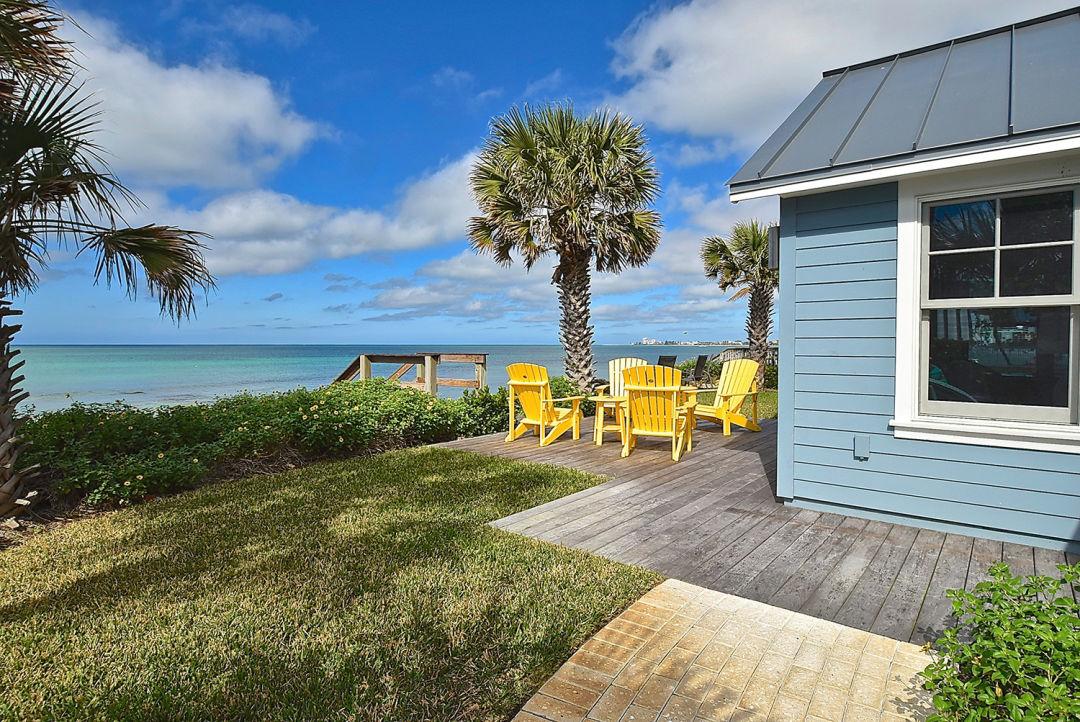
The restored cottage, which stands just 12 feet from the bluff that gives Point of Rocks its name.
Image: Murray Homes
There’s new life for a lovely little blue 102-year-old Gulf-front cottage perched just 12 feet from the rocky bluff that gives Point of Rocks its name.
The roughly 1,200-square-foot Palmer-Honore Cottage—one of the earliest residences on Siesta Key—was built in 1918 by Bertha Honore Palmer, the famed Chicago socialite who bought up some 80,000 acres of land throughout south Sarasota County in the early 1900s, including the land that’s now Myakka River State Park.
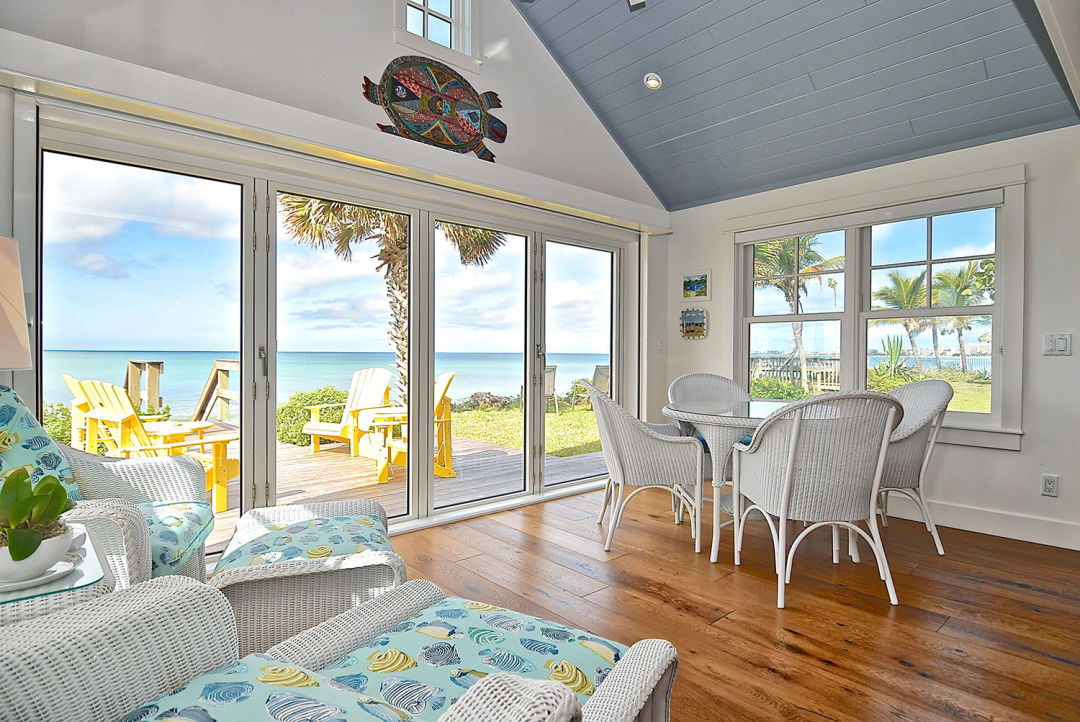
A view of the Gulf from the living room.
Image: Murray Homes
It’s now part of a gated compound that includes a brand-new, 3,000-square-foot main residence built to the highest hurricane building codes, along with a pool, outdoor living area and lush tropical landscaping that separate the two structures.
Steve Murray of Murray Homes was the contractor, and Greg Hall was the cottage architect. (Architect John Potvin designed the new main residence after Hall passed away last year.)
Hall had been involved in other area historic restorations, including the Edson Keith Estate at Phillippi Park and the Sarasota County courthouse tower. He won architectural awards for his work restoring the shade structure that gives Paul Rudolph’s iconic Umbrella House in Lido Shores its name.
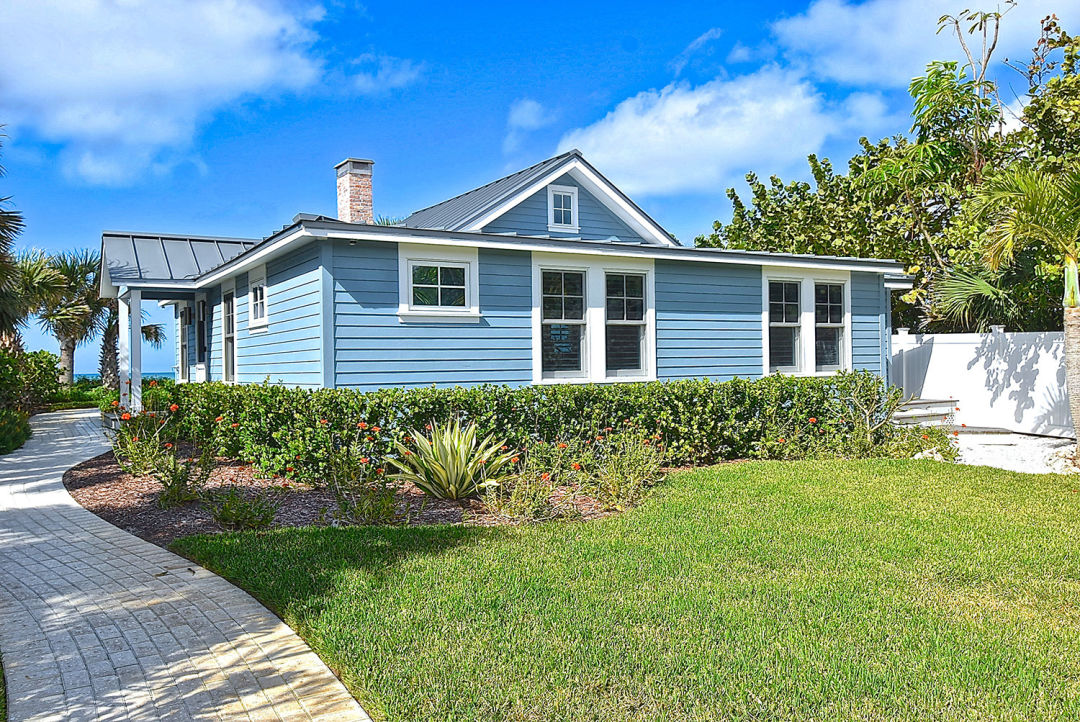
A look at the cottage's restored exterior.
Image: Murray Homes
He and Murray had determined that, because of today’s required setback lines, the only way to keep the cottage was to apply for historical designation from the county. “We could have torn it down, but then we wouldn’t have been able to build anything so close to the water” to replace it, Murray says.
In sleuthing out the cottage’s pedigree—a task made especially daunting because Siesta Key was actually part of a much larger Manatee County at the turn of the last century—Hall discovered that the land upon which Mrs. Palmer built the cottage had originally belonged to Benjamin Stickney, an early Siesta Key homesteader for whom the Stickney Point Bridge is named. Stickney sold the property in 1911 to H.H. Honore, Bertha’s father; she inherited it upon his death. When she died soon after the cottage was completed, her brother, Adrian Honore, inherited it.
The current homeowners purchased the cottage in 2014 from the from the Elling O. Eide Charitable Foundation. (Eide, himself a notable Sarasotan, was a world-renowned scholar of Chinese culture for whom the nonprofit Elling O. Eide Center, a private library and research center of classical Chinese literature and art in Sarasota, is named.) There were three other structures on the long, narrow property—another guest cottage, a carport and garage—that were demolished.
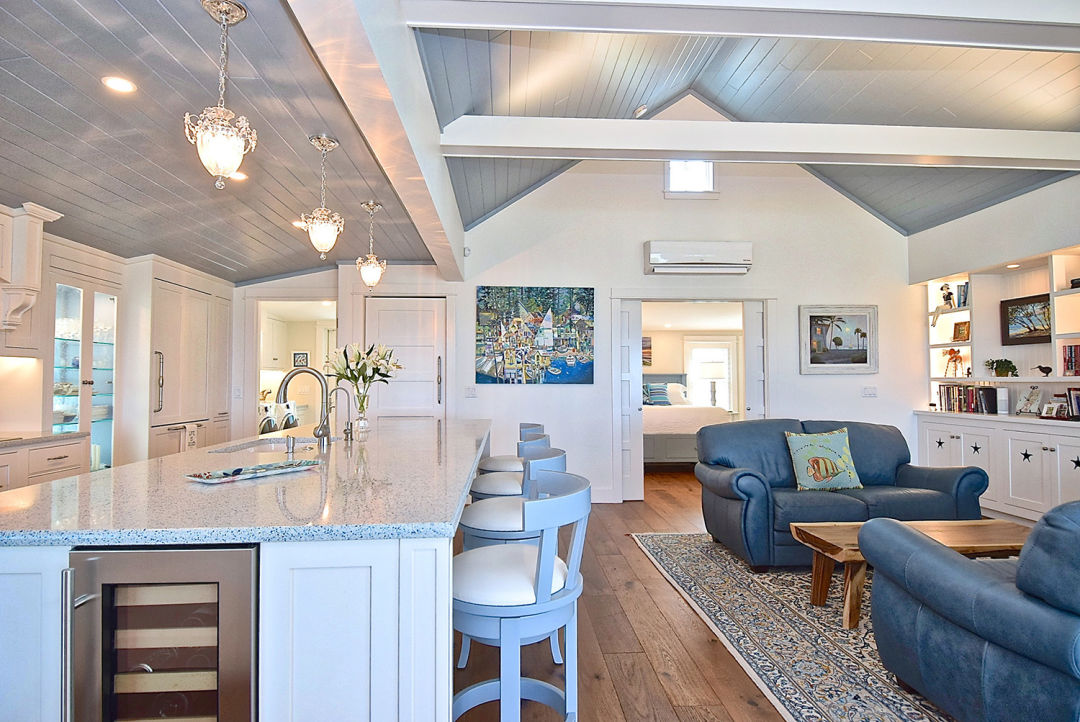
The kitchen
Image: Murray Homes
Because of its historic designation, Murray explains, the original footprint of the cottage as well as its exterior look—the window frames, trim detail, front door, even the blue exterior which was chosen from a historical palette—had to be maintained. The interior, however, is all brand new; "brand-new kitchen, baths, electrical, plumbing, everything,” Murray says.
The clients were repeat customers of Murray Homes. They bought the one-bedroom cottage on impulse. “It hadn’t been touched for years and years and years; everything was falling apart,” says Murray. “They reached and told us, 'We need to find out what we actually bought.' They said, ‘We might have backed ourselves into a corner.’”
The layers of bureaucratic jurisdiction to negotiate—state, county, historical preservation board, FEMA—took a couple of years before renovations could commence. “My clients lost their patience a couple of times, but they’re very happy,” Murray says.
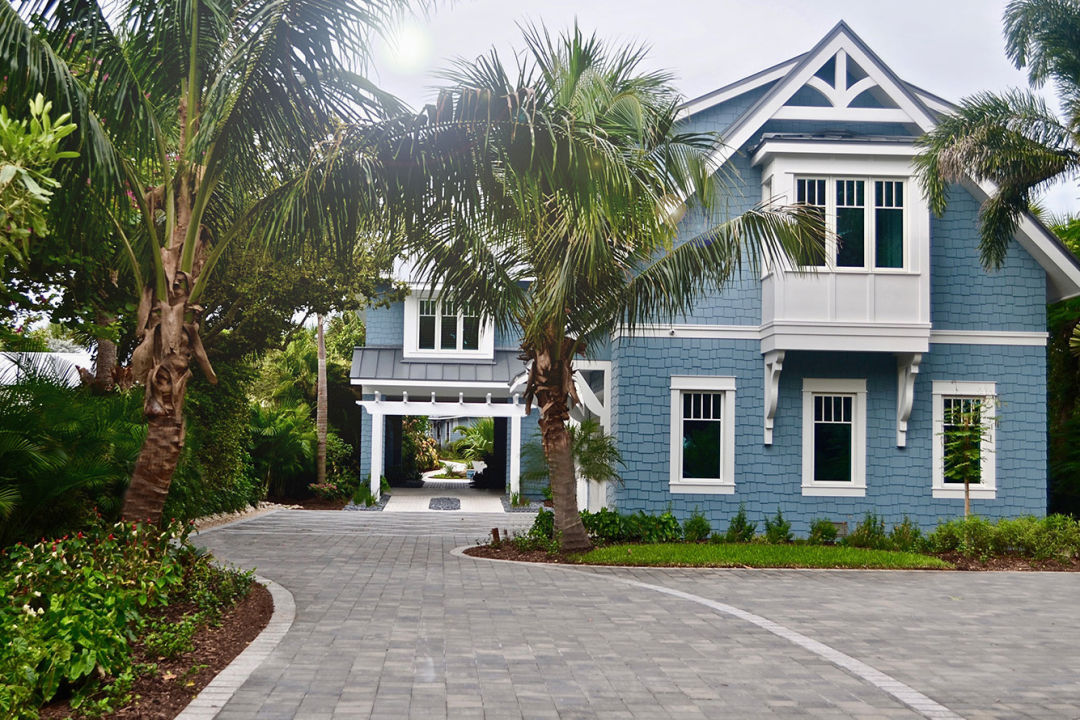
The new main residence, designed by architect John Potvin.
Image: Murray Homes
The new main residence was designed to follow the style of the cottage, with a steep-pitched roof, Hardy board siding and color palette. “When you look at them together," Murray says, “you can’t tell they’re 100 years apart.”
The contractor calls it his favorite of the 150-some homes his company has built in the area. “We build a lot of beautiful, big structures, but this one was very dear to my heart,” he says. “More than once we hit roadblocks we didn’t think we’d get through, but we managed to. But anytime anything’s difficult to do makes it more enjoyable when it’s complete.”
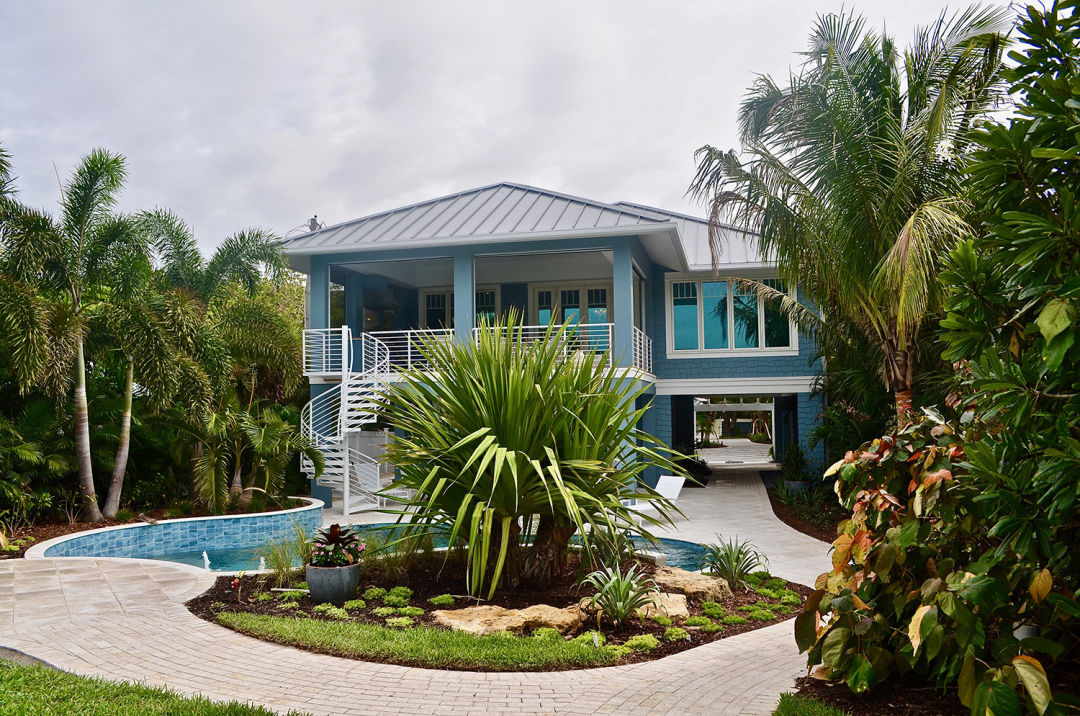
The rear elevation of the new main residence. Landscaping by Michael Gilkey.
Image: Murray Homes


